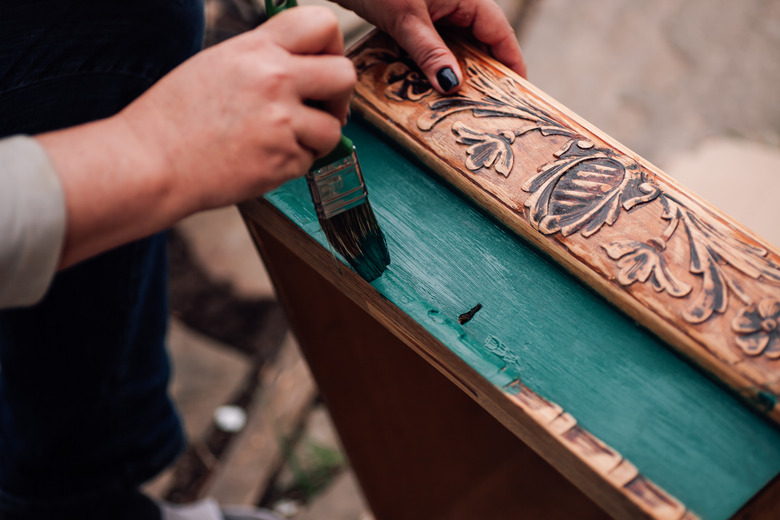How To Paint Over Stained And Varnished Furniture
We may receive a commission on purchases made from links.
Varnish is designed to protect wood from scratches, water, sun damage, and more. It does this by sealing the wood to keep out water and oil, but because paints are almost always either water- or oil-based, paint applied directly to a varnished surface does not stick well and can be removed with the slightest scratch. Aside from this, tannins in the wood stain can even bleed through the paint, leaving the color blotchy or orange-hued. The best way to paint over stained and varnished furniture is to sand the wood before using a primer, but you can also paint directly on the varnish if you apply the right primer first.
Sand the Wood
Sand the Wood
You don't need to strip all the stain or varnish from the surface of the paint, but you do need to rough up the surface enough to give the paint something to which it can cling. Use 150-grit sandpaper to scratch up the finish, taking care to sand all the nooks and crannies. When you're finished, wipe the surface with a tack cloth to remove all the dust. Allow the wood to dry fully before moving on to the primer.
Apply a Primer
Apply a Primer
Primer is critical when working with stained wood because it can prevent the tannins in the stain from bleeding through the new paint. If you absolutely can't sand the wood for one reason or another, you can bypass the sanding (though you will have the best results with sanding) as long as you use the right primer. A shellac-based primer is recommended for painting over stained and varnished wood whether or not you sand the surface first, as it can both block the tannins in the wood and help paint better adhere to the surface.
For best results, apply the primer evenly in thin layers with a foam brush or foam roller to minimize brush strokes. If any wood is still visible after the first layer of primer was applied, apply a second layer. Allow the primer to dry completely. If there are any brush strokes, use 220-grit sandpaper to smooth the surface and then wipe down the surface with tack cloth to remove the dust.
Paint the Wood
Paint the Wood
Once the wood has been properly prepared, you can start painting. You can use any type of paint with a shellac-based primer, but if you use any other primer, verify that it is compatible with your choice of paint. Use long, even strokes to completely cover the surface. Allow it to dry fully according to manufacturer directions before applying a second coat and if necessary, apply a third coat after the second coat has dried. Protect your handiwork by varnishing the wood with a good finish.
